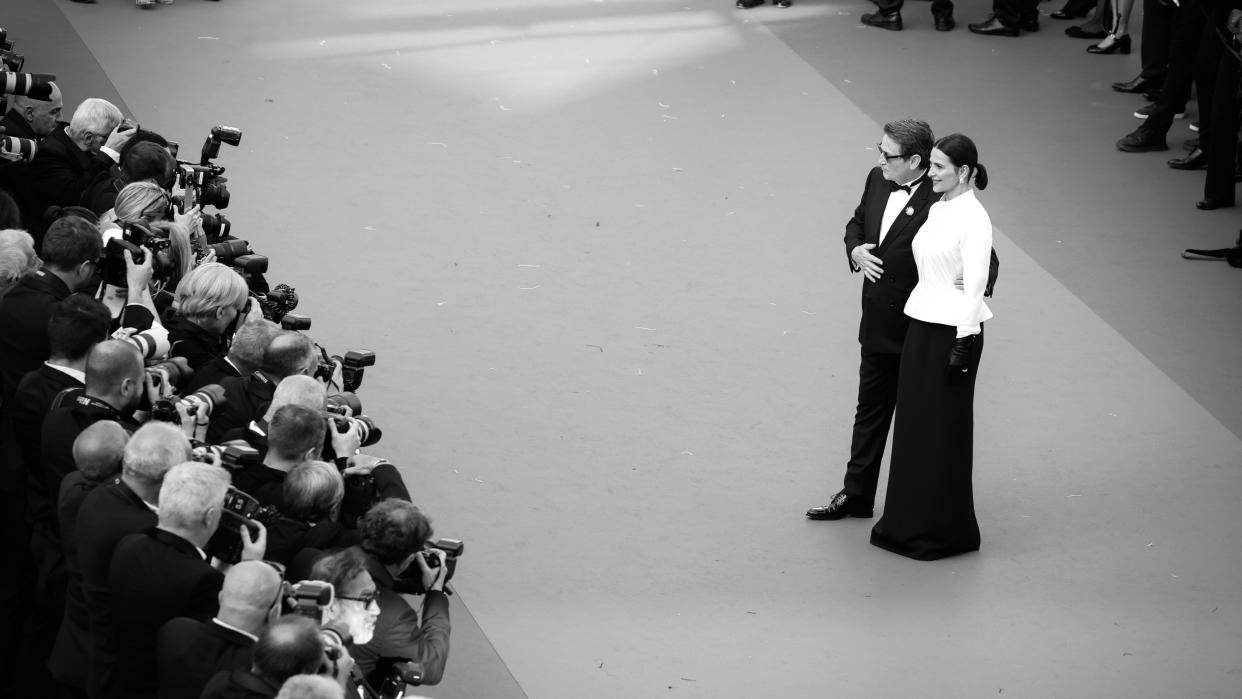The rapturous cinematic power of real cooking in 'The Taste of Things'

- Oops!Something went wrong.Please try again later.
- Oops!Something went wrong.Please try again later.
- Oops!Something went wrong.Please try again later.
- Oops!Something went wrong.Please try again later.
Cooking takes as long as it takes. An obvious concept but one easily forgotten during today's era of 30-second jump-cut videos on TikTok and Instagram. A long-braised stew can be aped in a quickfire video. Its slow, hours-long descent into deliciousness, however, cannot be enacted in seconds.
It was inevitable then that movies, those longer-form videos born long before the age of social media, would again honor the act of cooking in its spooling, uncompressed protractedness. "The Taste of Things," the 2023 movie from director Tran Anh Hung, won the best director award at Cannes and was recently released in U.S. theaters. How Tran films not only the movie's food but the cooking itself is a pleasurable relief.
Love in the kitchen
The movie takes place in the late 1880s and centers on two protagonists: Dodin (Benoit Magimel), a chef, and Eugenie (Juliette Binoche), his kitchen assistant. They have been cooking for guests for 20 years and are lovers. Dodin has asked her numerous times to marry him; Eugenie demures.
Food, of course, occupies a central position in their lives. It is also their work. And, so, "The Taste of Things" opens with an extended sequence of kitchen action. The actors are actually cooking, not playing at cooking. "The dishes come together like dazzling, sometimes ingeniously surprising set-pieces," said Justin Chang in the Los Angeles Times.
The luxurious pace of the cooking serves the narrative, as Dodin and Eugenie make sense of their intimacy and serve meals to visiting gourmands. That first cooking sequence is one of many, and it is "quite simply, an exquisite meal with which to kick off this exquisite picture," said Bilge Ebiri for Vulture. Tran is able to move into the kitchen and out of it throughout the movie because "he's already established the unique language and rhythms of the picture," added Ebiri. Plot and sensuousness merge, and, because of that, "this elegant, romantic period film — very proper and prestigious and traditional perhaps on its surface — borders on the radical."
Bringing cooking to vivid life
Doing any kind of real-deal cooking proper justice, let alone dishes from two centuries ago, required Tran to bring in the big toques. He hired French chef Pierre Gagnaire who, along with Michel Nave, planned the dishes ahead and set them up for cooking on-set. "When there was a specific thing to do, Michel was saying, 'Yes, no, do it more like this,'" Binoche said in an interview on Eater. "You see me cut the fish at the beginning … You're frightened because you think, 'What if I miss it?'" But [that cut] was actually the first one that is shown in the film."
Binoche explained that if there were any errors in the cooking itself, the filming would have to begin again. That is how crucial the accuracy of the cooking was to the world Tran created. Similarly precise was the way the movie was lit. "The overarching impulse was not to artificially beautify the cuisine," said Ben Kenigsberg in The New York Times. "Tran said the food simply had to look right; he wanted realism in the cooking to serve broader expressive aims."
Yes, movies are artifice. When they capture the honest stride of real life, though, the echo resounds at a different amplitude than on social media. By using natural light to shoot the cooking sequences in "The Taste of Things," Tran strove to create cooking that "felt distinct from the static overhead 'beauty shots' of food on Instagram and in broadcast TV" with their sharp, overhead white light, wrote Simran Hans in Financial Times. Gagnaire, the movie's consulting chef, concurred. "The sound of pastry cracking," he said in the Financial Times, is "the total opposite of Instagram, where it's all shiny but there's no warmth, and no tenderness."

